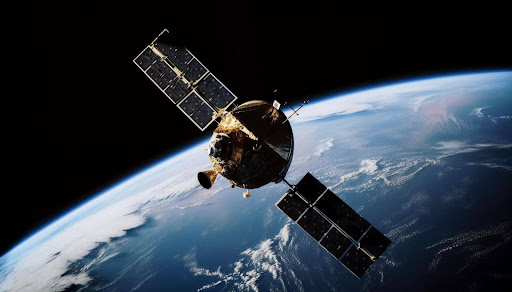With the growing population, it has become very difficult to ensure food security for everyone. In order to feed more than 9 billion people by 2050, we will need to produce 60% more food. It’s a difficult task because of the worst climate change. Especially when we are at danger of crop failures due to extreme weather changes. But technology has come to play its role in this field too. AgriTech, or agricultural technology, is revolutionizing farming by educating farmers. So they could use software, sensors, and data analysis to increase crop yields in the best manner.
Here in this article, we will examine how these modern technology developments are encouraging more crop yield.
Understand Modern Farming Technology
The term “modern farming technology” means the implementation of advanced techniques in agriculture to increase productivity and sustainability. Advancements in farming have grown to resolve different issues like rising labor costs, high supply costs, and shifting consumer expectations for sustainable, healthier food.
The Importance of Farming Technology
Agricultural technology has revolutionized farming ,with the use of the targeted insecticides, fertilizers, and water to particular locations rather than entire fields. This has a number of advantages:
- Enhanced crop yields
- Decreased consumption of pesticides, fertilizers, and water, which helps to maintain cheap food prices
- Reduced influence on the environment
- Reduced chemical pollution of water sources
- Increased safety for workers
The advanced robotic technologies also enhance the monitoring of natural resources, such as the quality of the air and water. Through this the farmer can control the production, processing, distribution, and storage of plants, which leads to:
- Reduced costs and increased efficiency
- Safer food and growing circumstances
- Diminished ecological impact
General Techniques to Improve Farming Crop Production
Quality of Seeds
In order to achieve strong crop yields, it requires careful selection of high-quality seeds. This is where services like JIVA give farmers access to different varieties and help them in evaluating the quality of their seeds.
Crop Growth Monitoring
Farmers can adapt unique requirements of crops at various phases of growth through growth monitoring. They can collect real-time data by technologies like drones and soil moisture sensors, which helps them to identify the stressors.
Appropriate Irrigation
To avoid the detrimental effects of both drought and overwatering, farmers can use efficient irrigation techniques. These effective water management techniques improve crop resilience, particularly during extreme weather changes.
Accurate Weather Prediction: The farmers should’ve access to accurate weather forecasts via mobile apps to modify their farming practices and prepare for unfavorable conditions. This helps them in lowering the risks associated with erratic weather patterns.
Field Productivity Zones
There are customized management techniques which have made it possible to divide the fields into productivity zones according to soil properties and production potential.
Frequent Scouting
In order to identify pests and crop health problems, the crop monitoring must be done continuously. When farmers timely interventions, they can protect crops and yield maximum results.
Smart Fertilizer Application
The secret to increasing output is to apply fertilizer as efficiently as possible. The farmers should take into account the needs of the crop and the soil. Technology-based personalized advice guarantees the efficiency of resources and supports the health of soil.
Crop Protection and Rotation Techniques
With the use of integrated pest control and crop rotation techniques, farmers can enhance the soil fertility while shielding crops from pests and illnesses. Drones and other technologies help in crop health monitoring and efficient protective measure application.
Weed and Pest Control
Because of the versatility, sustainable weed and pest control is crucial. Thera are targeted treatments that can lessen environmental effects which are possible with the usage of advanced imaging and machine learning.
Plant Disease Prevention and Management
An effective management of plant diseases depends on instant and precise diagnosis of crops. The speed and accuracy of disease detection are improved by using machine learning techniques.
Soil Testing and Quality
Consistent soil testing could give important information of nutrient availability, which helps the farmers to use direct efficient fertilization techniques. Innovative techniques like DNA sequencing can provide farmers with limited resources. It helps them in soil health evaluations, to improve agricultural yields.
Technological Advancements in Farming for Higher Crop Yields
1.Precise Farming
Precision agriculture uses technology and data to enhance crop management and maximize production. Through this they help farmers in making best decisions, with the use of technologies such as satellite photography, GPS, and artificial intelligence (AI).
2. Remote Sensing Technologies
Through remote sensing technologies farmers can collect data on crops from a distance using sensors and data analysis. It facilitates monitoring of environmental variables and crop health remotely.
Yield Monitoring Sensors: These sensors help farmers to identify areas that are overproducing and underperforming by tracking crop yields during harvest.
Instruments for Variable Rate Fertilizer Application: These instruments ensure effective use of resources by adjusting fertilizer amounts which farmers applied throughout a field. This also depends on the yield data.
Controllers for Variable Spraying and Weed Mapping: With the use of this technology, weed areas can be identified and mapped. Through this the farmer can understand the targeted delivery of herbicides.In order to facilitate efficient field management, it generates maps which show elevation and field borders.
GPS Guidance Systems: During planting or harvesting, GPS helps the farmers to precisely use their equipment, reducing overlaps and gaps.
3. Data Driven Techniques
Through data-driven farming, the farmers can make better agricultural decisions. Farmers can improve pest control, irrigation, and planting schedules by evaluating data from sensors, drones, and satellites.
4. Software Applications for Modern Farming
Hardware and farm management software work together to simplify the crop work. These apps, which are frequently cloud-based, allow the farmers to run their businesses from any location.
Disease Diagnosis and Detection: Computer vision is used by apps such as “Crop Doctor” to detect crop illnesses, which then recommend remedies.
Fertilizer Calculators: These resources help farmers in determining the right applying rates and analyzing the composition of fertilizer.
Tools for Soil Analysis: Programs such as the USDA’s Web Soil Survey handle data from soil tests and offer suggestions for nutrient management.
Crop Harvest Readiness Monitoring: To identify the best times to harvest, there is software which monitors weather and soil moisture.
5. Modern Communication Technologies
Mobile phones and the internet are the best ways of information and communication technology (ICT), which provides farmers with the latest crop management information. This technology makes it easier to connect with suppliers and buyers.
6. The Use of Telematics
Telematics transfers information from agricultural machinery to a mobile device or central system. This can better monitor and control the machinery operations through real-time information.
Conclusion
As our population continues to rise, we must address the issue of global food security. We need creative solutions, a specialist in agriculture argues.
“Sustainably producing food requires agritech.”
The way farmers operate is evolving because of technologies like remote sensing and precision agriculture. They increase our crop yields and enable us to use resources more efficiently. Farmers may efficiently manage their farms by utilizing modern technologies and communication methods.





